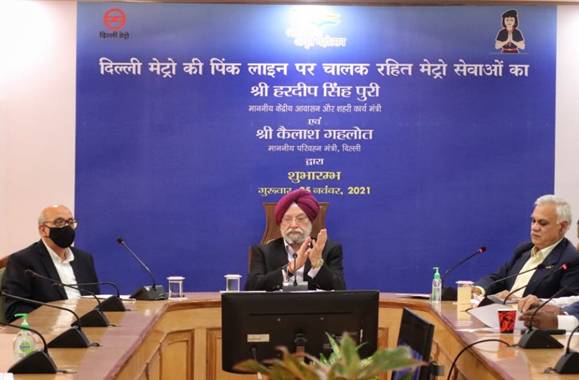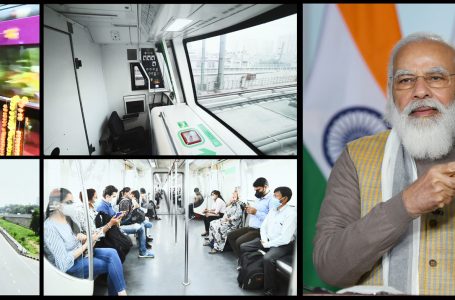Driverless Train on Pink Line of Delhi Metro inaugurated

Delhi Metro has now become the fourth largest network in the world to operate with driverless technology

New Delhi, Nov 25, 2021: Union Minister of Housing and Urban Affairs Hardeep S. Puri along with Transport Minister for the Government of National Capital Territory of Delhi, Kailash Gahlot today virtually inaugurated the Unattended Train Operations (UTO) on the Pink Line of the Delhi Metro.
Secretary, Ministry of Housing and Urban Affairs, Durga Shanker Mishra and Dr. Mangu Singh, MD, Delhi Metro Rail Corporation were also present on the occasion.
Narendra Modi launched the first driverless train operations of the Delhi Metro in December 2020, when he flagged off the Magenta Line’s driverless operations, and in the next 11 months, 59 km stretch of driverless operations will be added.
Puri said that with a massive driverless network of 96.7 kilometres, the Delhi Metro has now become the fourth largest network in the world to operate with driverless technology.
He said that Delhi Metro has peak passenger load of 65 lakhs per day in the pre-covid times, and soon we will surpass that figure. He added that increase in metro ridership is reducing the load of vehicles on the road, helping in reducing pollution as well as congestion.
Driverless Train Operations (DTO)
Driverless Train Operations (DTO) has been launched on the 59 kilometre long Pink Line (Majlis Park to Shiv Vihar) of Delhi Metro. With this, the Delhi Metro’s fully automated network will grow to about 97 kilometres, which is 4th largest in the world and the only DTO network in India. The DTO facility was launched on the Magenta Line in 2020 with which the Delhi Metro had entered the elite league of world’s 7% Metros in the world which operate fully automated metro networks.
The Driverless Train Operation will bring more flexibility in train operations, reduce human interventions and human errors. It will also help in improving the availability of coaches for service. The Driverless Trains will eliminate the manual process of checking done before induction, subsequently reducing burden on train operators. The parking on stabling line in depots will also be done automatically.
The DMRC has already started reaping benefits of driverless operations on its Magenta Line in terms of increased availability of coaches for service. Reliability of the trains has increased manifold due to exhaustive self-tests done before induction in service everyday automatically, eliminating all possibilities of human error. The benefits will further increase with a longer network under driverless train operation.
In DTO, initially, the train operator will be present in the train to instil a sense of confidence and assistance. DTO’s higher level of diagnostic features will help move from conventional time-based Maintenance to Condition Based Maintenance. This will also reduce maintenance down time of trains.



